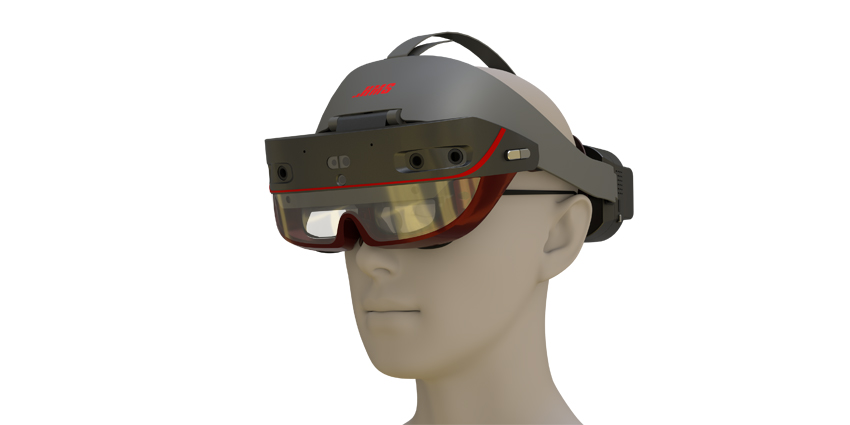Efforts to build metaverse spaces with a focus on privacy and decentralisation have begun shaping the digital landscape with a trove of bespoke, user-centric solutions. Some firms have taken assertive approaches to ensure data protection rights and unobtrusive advertising for augmented reality (AR) users.
XR Today interviewed Ray Shingler, Co-Founder and Vice-President of Product Development for Spotselfie. He currently holds more than 25 years of experience in creating mobile digital solutions, social networking, and gaming. He has worked with major tech companies such as Intel, IBM, Hewlett-Packard (HP), Cisco, and many others to develop next-generational digital solutions.
XR Today: How does Spotselfie deliver bespoke AR adverts in predefined spaces?
Ray Shingler: Our goal has been to be different from the start. We wrote down on our board the five ways Facebook, Instagram, and other tech firms have already implemented advertising to their users.
Most intruded on user privacy, whether through data mining, personal account information, or other means of what they liked from their friends. Conversely, we let our users tell us more about themselves in a passive profiling mechanism that is not intrusive but general questions and prewritten answers.
This feature is our patented urMojo solution, which gives the power back to the end user to create their own custom AR real-world social metaverse and allows us to present custom AR immersive ads to them.
It’s a win-win for us both by benefitting from filtering the AR social space based on a percentage match to their urMojo (content or people), which is a two-way gate.
Today’s fact of the week includes a striking statistic surrounding smartphone ownership among college students. With a smartphone, anyone can download our app and join the community! #AR #socialnetworking #socialtechnology #augmentedreality #ARapp #spotselfie pic.twitter.com/64Cv4jeBBq
— Spotselfie (@SpotselfieApp) August 24, 2022
Users can decide who can find you or view your content, based on a percentage match to your urMojo. As a platform, we do not use artificial intelligence (AI) to filter what people see or the connections they can make.
For example, if our user is at a mall and we know they are athletic and enjoy running, the local GPS athletic store can drop AR ads at their store about a sale on running shoes.
The store’s marketing department assigns ads based on different urMojo’s people in our platform they are targeting, and they get no other info about them, just that they enjoy running.
The great thing about this mechanism is the user does not see ads for the next month in their browser for running shoes or anything else they searched for on Google. The ads are custom based on their urMojo, which they can update in real-time to change the AR feeds and ads.
We are opening up our platform for businesses to purchase their digital twin (Spotland) to create their social metaverse to be the admin on the activity about their brand and merchandise and taking it from Big Tech to govern it. We allow any business, large or small, to place AR immersive ads worldwide, even at the “Big Game,” concerts, and others to advertise to our users who are there live.
XR Today: What was the motivation for creating this solution and its ultimate goal?
Ray Shingler: The motivation to create Spotselfie was to give power back to the most critical asset, the users. We offer revenue sharing and digital land ownership in our AR social metaverse with Spotland. Users create the content; they should get a piece of the advertising revenue.
XR Today: What are some of the top use cases for Spotselfie’s advert metaverse, and how does it drive social interaction between users?
Ray Shingler: The most recent and significant launch will be the Purdue Social metaverse this fall. Here businesses will lease Spotlands on campus to expand their brand into AR to reach this tremendous demographic group.

The use of buy one, get one (BOGOs) will create a viral (share) use of their products along with AR immersive fun advertisements located at football games, dorms, libraries, and others.
I feel our users will welcome more AR ads because they know the community benefits from the revenue share of roughly 30 percent. There are over 30,000 students at an average university, and all are ready to share in this new tech.
XR Today: How have students responded to having information on-demand about their respective campuses?
Ray Shingler: The response has been very positive and students feel like they are included in the Web3 landscape and have some ownership and alignment with their school.
The ability to meet people faster and with more common interests helps first-year students adapt to campus life quicker and with more support from newfound friends (using urMojo) and increases retention rates. Universities get a revenue share with our advertising platform as well.
A new revenue stream has been created with AR digital GPS-located ads, and no physical billboards are needed on campus. On October 15th, students can open their beta metaverse stores on campus to sell services and merchandise to fellow students. We are helping to start an entrepreneur drive in business and marketing early in college.
XR Today: In the Metaverse, what are the pros and cons of using VR vs AR in specific settings or verticals?
AR is here now with phones and no additional tech or bulky and expensive headgear is needed. The cons are that users have to hold up the phone to view, but cheaper AR glasses are just around the corner, expanding our platform and making it more effortless to use.
A big positive for AR is that it keeps you in touch with your real-world surroundings and, even more importantly, direct contact with real people.
IT research firm, Everest Group, conducted a report that found that the growth of the metaverse is expected to expand rapidly by 2030. As the metaverse evolves, Spotselfie is excited to continue growing and being a part of the future! #ARapp #socialnetworking #spotselfie #AR pic.twitter.com/KtIbftkCte
— Spotselfie (@SpotselfieApp) September 14, 2022
Conversely, VR is great for games and training. Big tech companies may control the headset space by removing smaller companies like ours from entering the market and sharing the Metaverse with users.
In other news, we have five patents in AR social with three more continuations to protect our vision from big tech. We jumped into this space after launching in 2016 and won’t give up.
Our biggest hurdle to date is helping to spread the word about our platform and efforts to share what we have built with our users in terms of ownership and revenue.
We don’t want investors because we want to have the final say 100 percent of the time to control our Metaverse with user input. We are built from us, directly to you.







